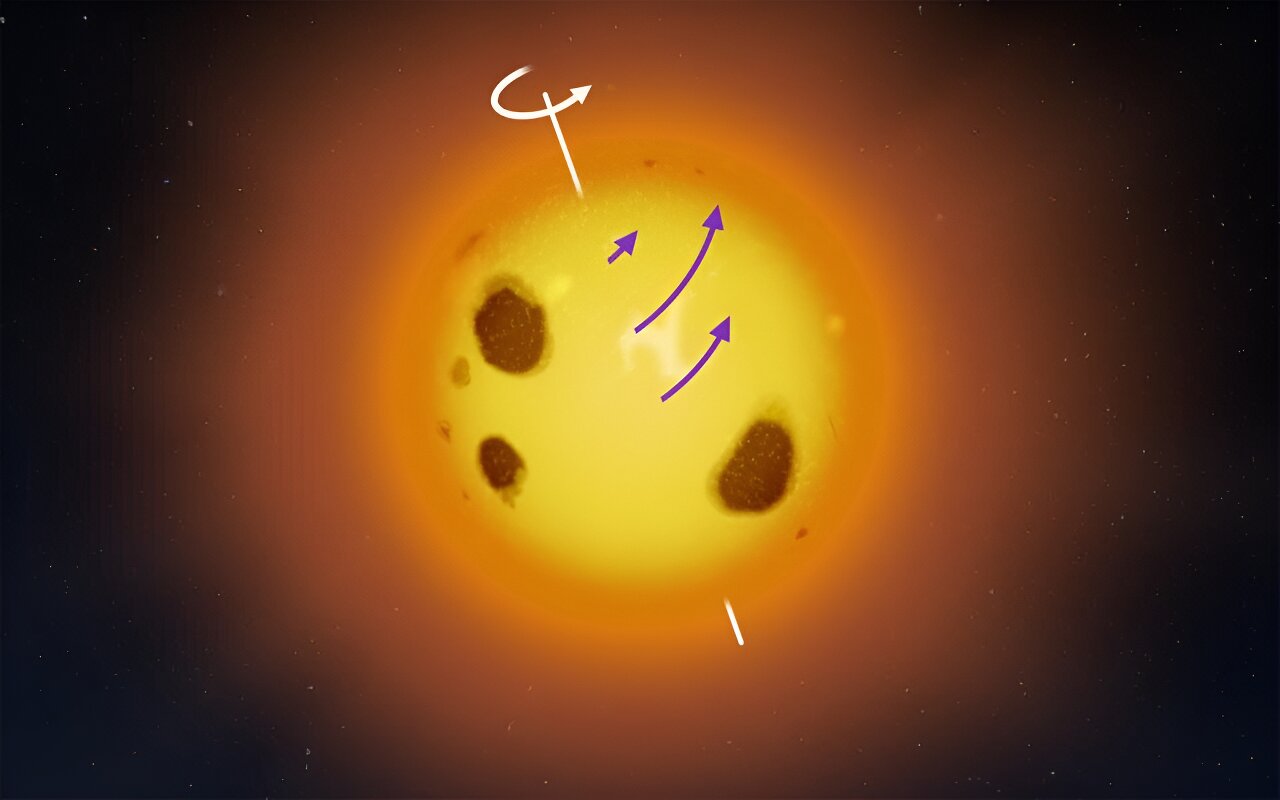Scientists have studied the star V889 Herculis, which is very similar to the young Sun. Like all luminaries it rotates unevenly at different latitudes. However, the researchers have found that these velocities are distributed in a very strange way.

Rotation differences at different latitudes
The Sun rotates fastest at the equator, while the rate of rotation slows down at higher latitudes and is slowest in the polar regions. But the neighboring sun-like star V889 Herculis, 115 light-years away in the constellation Hercules, rotates fastest at a latitude of about 40 degrees, while the equator and polar regions rotate more slowly. This finding was published in the journal Astronomy & Astrophysics.
A similar rotation profile has not been observed for any other star. The result is stunning because stellar rotation is considered a well-studied fundamental physical parameter, but such a rotation profile has not been predicted even in computer simulations.
“We applied a newly developed statistical technique to the data of a familiar star that has been studied at the University of Helsinki for years. We did not expect to see such anomalies in stellar rotation. The anomalies in the rotational profile of V889 Herculis indicate that our understanding of stellar dynamics and magnetic dynamos are insufficient,” explains researcher Mikko Tuomi, who coordinated the study.
Plasma ball dynamics
The target star V889 Herculis looks a lot like a young sun, which tells us a lot about the history and evolution of our Sun. Tuomi emphasizes that understanding stellar astrophysics is crucial in order to, for example, predict phenomena caused by activity on the surface of our luminary, such as spots and eruptions.
Stars are spherical structures in which the matter is in a state of plasma composed of charged particles. They are dynamic objects that are in equilibrium between the pressure generated by nuclear reactions at their center and their own gravity. They don’t have solid surfaces, unlike many planets.
The rotation of a star is not constant for all latitudes. This is an effect known as differential rotation. It is caused by hot plasma rising towards the surface of the star due to a phenomenon called convection, which in turn affects the local rotation rate. This is also because angular momentum must be conserved and convection occurs perpendicular to the axis of rotation near the equator, whereas near the poles it is parallel to the axis.
However, many factors such as the star’s mass, age, chemical composition, rotation period, and magnetic field affect the rotation and cause variations in differential rotation profiles.
Statistical method for determining the rotation profile
Thomas Hackman, an associate professor of astronomy involved in the study, explained that the Sun was the only star for which it was possible to study the rotation profile. “Stellar differential rotation is a very crucial factor that has an effect on the magnetic activity of stars. The method we have developed opens a new window into the inner workings of other stars.”
Astronomers from the Department of Particle Physics and Astrophysics at the University of Helsinki have determined the rotation profile of two nearby young stars by applying new statistical modeling to long-term brightness observations. They simulated periodic variations in the observations, accounting for differences in the apparent motion of the spot at different latitudes. The motion of the spot allowed us to estimate the rotation profile of the stars.
It turned out that the second of the stars studied, LQ Hydrae, rotates like a solid body. The rate of this process was found to be unchanged from the equator to the poles, indicating that the differences are very small.
Observations from Fairborn Observatory
The researchers based their findings on observations of target stars from Fairborn Observatory. The brightness of stars has been tracked with robotic telescopes for about 30 years, providing insight into the behavior of stars over long periods of time.
The target stars V889 Herculis and LQ Hydrae are roughly 50 million year old stars that look a lot like the young Sun. They rotate very rapidly, with rotation periods of only about a day and a half. For this reason, long-term light observations contain many rotation cycles. These stars were chosen for the study because they have been observed for decades and because they are both being actively studied at the University of Helsinki.
According to phys.org


